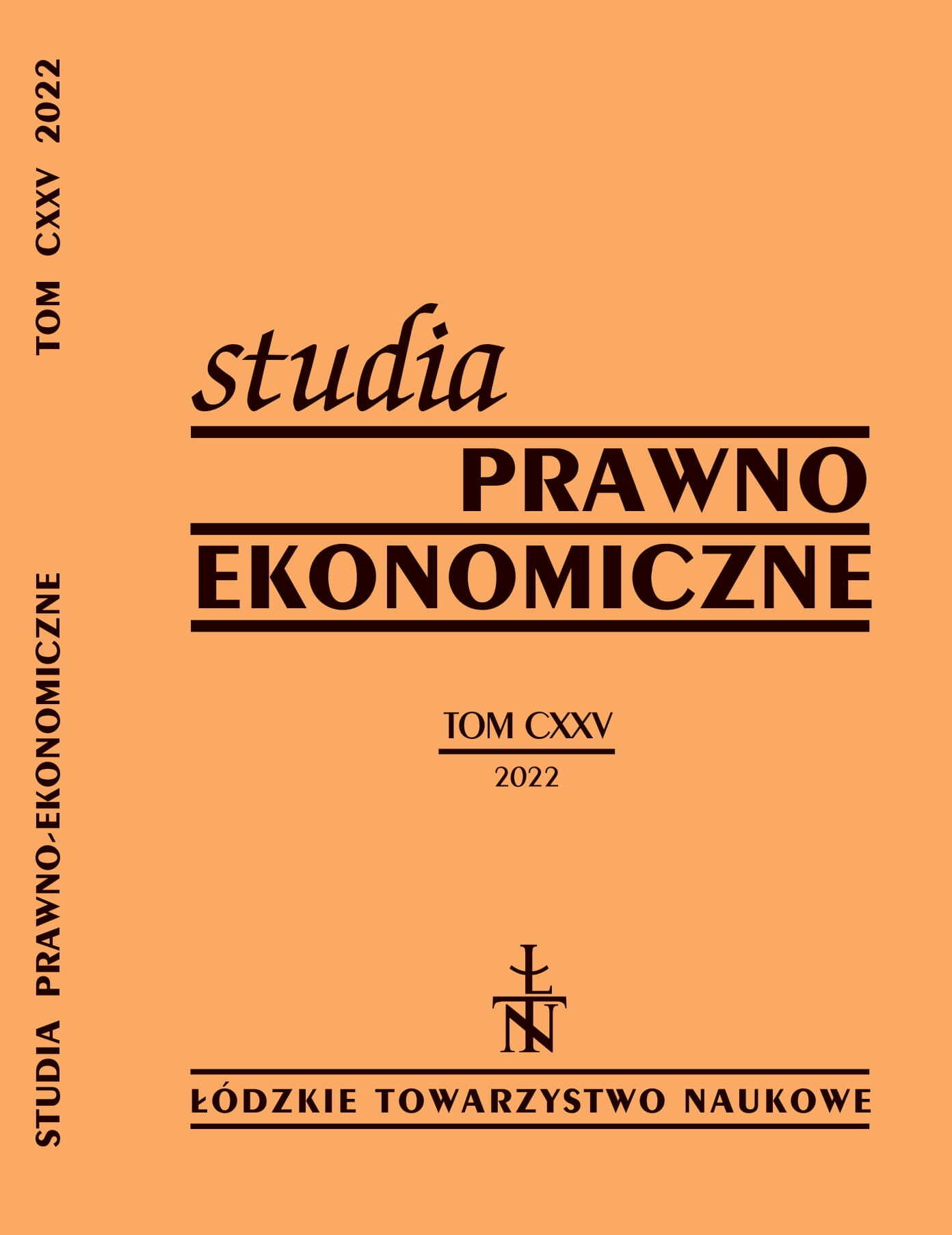The financial strategy of acquirers and M&A success in the automotive sector
DOI:
https://doi.org/10.26485/SPE/2022/125/6Keywords:
mergers and acquisitions, financial management, enterprise growthAbstract
Background: The article investigates factors that contribute to the success of mergers and acquisitions (M&A). The problem of capital consolidation profitability is still not solved, and the research results so far are inconclusive or even contradictory. The article proposes an analysis of the financial situation of enterprises carrying out mergers or acquisitions before the transaction to define the conditions of their potential success.
Research purpose: The main objective of the article is to assess the relationship between the financial situation of an enterprise implementing an external growth strategy through capital consolidation and a successful merger or acquisition. We hypothesize that one of the factors responsible for a successful merger of enterprises is the entity’s possession of specific resources and the possibility of using them. It was proposed that the measuring potential of the acquiring company should be measured by its balance sheet structure, financial liquidity and profitability, which form the framework of the financial strategy.
Methods: The article compares the values of selected financial ratios of companies that carry out mergers or acquisitions in the automotive sector. Pre-transaction values were analyzed and related to the excess rate of return on the shares of the acquiring company after consolidation, which was used to assess the success or failure of the consolidation effect. The study used descriptive statistics, mainly the median and the Mann-Whitney test.1
Conclusions: The comparative analysis shows that consolidating companies were more likely to be unsuccessful if they followed a stable, balanced, and prudent financing policy. Companies with higher financial liquidity, better return on capital or operating activities, and more indebtedness achieved higher above-average rates of return after consolidation. The research results may indicate insufficient due diligence by companies in better financial standing. Those with more limited resources and financial possibilities choose expansion goals with greater care, which may result in better results after the consolidation.
Downloads
References
Aggarwal P., Garg S., Impact of mergers and acquisitions on accounting-based performance of acquiring firms in India, Global Business Review 2022/23 (1), pp. 218–236.
Akben-Selcuk E., Altiok-Yilmaz A., The impact of mergers and acquisitions on acquirer performance: Evidence from Turkey, Business and Economics Journal 2011/22, pp. 1–8.
Alhenawi Y., Stilwell M., Value creation and the probability of success in merger and acquisition transactions, Review of Quantitative Finance and Accounting 2017/49 (4), pp. 1041–1085.
Bhaumik S.K., Selarka E., Does ownership concentration improve M&A outcomes in emerging markets? Evidence from India, Journal of Corporate Finance 2012/18 (4), pp. 717–726.
Grigorieva S., Petrunina T., The performance of mergers and acquisitions in emerging capital markets: New angle, Journal of Management Control 2015/26 (4), pp. 377–403.
Harford J., Corporate Cash Reserves and Acquisitions, The Journal of Finance 1999/54 (6), pp. 1969–1997.
Harrison J.S., Hart M., Oler D.K., Leverage and acquisition performance, Review of Quantitative Finance and Accounting 2014/43 (3), pp. 571–603.
Hitt M., Harrison J., Ireland R.D., Best, A., Attributes of successful and unsuccessful acquisitions of US firms, British Journal of Management 1998/9 (2), pp. 91–114.
Jallow M.S., Masazing M., Basit A., The effects of mergers & acquisitions on financial performance: Case study of UK companies, International Journal of Accounting & Business Management 2017/5 (1), pp. 74–92.
Jensen M.C., Agency costs of free cash flow, corporate finance, and takeovers, American Economic Review 1986/76 (2), pp. 323–329.
Kaplan S.N., Weisbach M.S., The Success of Acquisitions: Evidence from Divestitures, The Journal of Finance 2012/47 (1), pp. 107–138.
Kithinji A.M., Waweru N.M., Merger Restructuring and Financial Performance in Kenya, Journal of Economics, Management and Financial Markets 2007/2 (4), pp. 10–32.
Kukalis S., Corporate Strategy and Company Performance: The Case of Post-Merger Performance, International Journal of Finance 2007/19 (3), pp. 4475–4493.
Leepsa N.M., Merger Motives, Trends and Post Merger Performance: Evidence from Electricity Companies in India, Journal of Business Economics and Finance 2012/1 (2), pp. 59–82.
Leepsa N.M., Mishra C.S., An Examination of Success of Mergers and Acquisitions in Manufacturing Sector in India Using Index Score, Annual Symposium on Management and Social Sciences, August 29–31, 2014, Seoul, South Korea, http://dspace.nitrkl.ac.in/dspace/bitstream/2080/2183/1/Full%20Paper_NML_CSM_MA_20062014.pdf; accessed 17.07.2022.
Lempp M., Siegfried P., Characterization of the Automotive Industry. In Automotive Disruption and the Urban Mobility Revolution, Springer, Cham 2022, pp. 7–24.
Loughran T., Vijh A.M., Do long-term shareholders benefit from corporate acquisitions?, The Journal of Finance 1997/52 (5), pp. 1765–1790.
Maloney M.T., McCormick R.E., Mitchell M.L., Managerial decision making and capital structure, Journal of Business 1993, pp. 189–217.
Martynova M., Renneboog L., A Century of Corporate Takeovers: What Have We Learned and Where Do We Stand?, Journal of Banking & Finance 2008/32 (10), pp. 2148–2177.
Moeller S.B., Schlingemann F.P., Are cross-border acquisitions different from domestic acquisitions? Evidence on stock and operating performance for US acquirers, Journal of Banking and Finance 2004, https://ssrn.com/abstract=311543: accessed 17.07.2022.
Moeller S.B., Schlingemann F.P., Stulz R.M., Firm size and the gains from acquisitions, Journal of Financial Economics 2004/73 (2), pp. 201–228.
Owen S., Yawson A., Human development and cross-border acquisitions, Journal of Empirical Finance 2010/17 (4), pp. 689–701.
Pan Y., What determines the success of bidding firms in M&A deals?, Concordia University 2015, Doctoral dissertation, p. 28, https://spectrum.library.concordia.ca/id/eprint/980055/1/Pan_MSc_S2015.pdf; accessed 17.07.2022.
Rose C., Sørheim D., Lerkerød M., In search of value drivers in mergers and acquisitions: The Nordic evidence, International Journal of Business Science & Applied Management (IJBSAM) 2017/12 (1), pp. 1–28.
Shim J., Okamuro H., Does ownership matter in mergers? A comparative study of the causes and consequences of mergers by family and non-family firms, Journal of Banking & Finance 2011/35 (1), pp. 193–203.
Szymczak W., Podstawy statystyki dla psychologów. Podręcznik akademicki, Centrum Doradztwa i Informacji Difin, Warszawa 2018, pp. 198–200.
Warter L., Warter I., The phenomenon of merger and acquisition within the automotive industry, North Economic Review 2017/1 (1), pp. 208–215.
Warter L., Warter I., Mergers and Acquisitions in Eastern Europe: Intercultural Issues in the Automotive Industry. In Understanding National Culture and Ethics in Organizations, Emerald Publishing Limited 2020, pp. 21–32.



